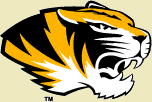Surplus Property
Items or Materials having Environmental, Health and/or Safety Concerns
Environmental, Health and Safety Guidelines
Items/materials PROHIBITED as Saleable Surplus to the Public AT ALL TIMES. These items/materials will not be accepted for sale to the public by University of Missouri Surplus Property.
Asbestos-containing items/materials (in poor or deteriorating condition): Known asbestos containing items including lab bench tops, black boards, and fume hoods in deteriorating condition. These must be managed according to your campus Environmental Health & Safety policy and BPM 603 – Asbestos – Application, Removal, Disturbance and Disposal
Laboratory or “Waste-like” chemicals/items: Acids, bases, solvents, solid (dry) chemicals, leaking lead-acid batteries, broken fluorescent lamps, chemicals in deteriorating containers, etc., which could be potentially characterized as Hazardous Waste must not be transferred and offered to University of Missouri Surplus Property.
Laser producing equipment (high-powered): Laser-producing equipment with rating markings of “Class 3B” (“IIIb”) or “Class 4” (“IV”) must not be transferred and offered to University of Missouri Surplus Property, and when applicable, must be managed according to your campus Environmental Health & Safety policy.
Radioactive sources or equipment: Equipment containing radioactive sources may be considered Generally Licensed Devices by the Nuclear Regulatory Commission, and must be managed according to campus Environmental Health & Safety policy. These devices can include but are not limited to: liquid scintillation counters, electron capture detectors, gas chromatograph units, fixed gauging devices, static eliminators, luminous exit signs, calibration or reference standards, some ice detection devices, and in vitro laboratory kits.
Universal Waste: Material which could be characterized as Universal Waste in Missouri must not be transferred to University of Missouri Surplus Property. Universal Waste includes fluorescent and other lamps/light bulbs (High-pressure sodium, Mercury vapor, Metal halide, and High-intensity discharge), mercury-containing equipment (thermostats, mercury switches, and mercury thermometers).
X-Ray equipment: Must be managed in accordance with campus Environmental Health & Safety policy and Missouri Radiation Control Program Guidance. May be sold as scrap, but first must be rendered inoperable by a qualified technician.
PROHIBITED WITHOUT APPROPRIATE PREPARATION – Items/materials PROHIBITED as Saleable Surplus or Scrap to the Public without appropriate preparation will not be accepted for sale to the public by University of Missouri Surplus Property.
.
Chemicals: Any commercial, non-laboratory chemicals such as adhesives, paint, polyurethane and other surface finishes, cleaning compounds, pesticides, etc. must be in non-leaking containers with original, legible, manufacturer’s labels and in good, saleable condition.
Drums, Barrels, Other Empty Recyclable Metal or Plastic Chemical Containers: Empty metal drums or other containers which formerly contained chemical materials (solvents, oil, cleaning products) must be completely emptied and reasonably cleaned of any remaining, residual material prior to transport to University of Missouri Surplus Property.
Electrical, hydraulic, and other equipment and/or components: Including transformers, capacitors, switches, fluorescent lamp ballasts, vacuum pumps being sold as scrap. When such items are determined to be sold as scrap, oils and other fluids must be removed, and electrical hazards eliminated, by a qualified technician PRIOR to transport to University of Missouri Surplus Property.
Gas cylinders: Must be empty and depressurized and in acceptable condition to be sold as scrap (e.g., valve removed or cylinder otherwise cut open).
Laboratory equipment: Laboratory equipment that has been in contact with hazardous chemical, biological or radiological material; includes but is not limited to: glassware, refrigerators, freezers, centrifuges, incubators, chemical fume hoods, and biological safety cabinets.
The offeror must clean and decontaminate such equipment, and ensure that the item to be transferred to University of Missouri Surplus Property is free of contamination prior to transfer.
If an item cannot be declared by the owner to be free of hazards to handlers or end users, then it must be managed as solid (municipal) waste.
Refrigerant-containing equipment (in general): When items will be sold as scrap, any refrigerant (e.g., Freon) or other chemicals in air conditioners, refrigerators, freezers, water fountains, dehumidifiers, etc., must be removed by a qualified individual prior to transfer to University of Missouri Surplus Property. They must also be cleaned/decontaminated as described below. If determined to be sold as scrap, any refrigerant or other chemicals remaining must be removed by a qualified technician prior to transfer to University of Missouri Surplus Property.
Refrigerators, freezers (functional): Any refrigerator or freezer that has stored non-food items must be cleaned/decontaminated as described below, and must be indelibly marked “Not for Human Consumables” prior to transfer to University of Missouri Surplus Property.
If any such item is deemed unsaleable as a working unit (e.g., history unknown, obvious odors, stains remaining), then it must be marked “Scrap only - Not for reuse” and sold as scrap.
Additional Information
Scrap metal/electronics (in general): Any scrap metal material or scrap electronic item (sheet metal, solder, filings, circuit boards, computer hardware) containing regulated metals (e.g., lead, silver, cadmium, or chromium) must be recycled or disposed of properly if not sold.
Warning Labels: In addition to specific instructions above, any existing inapplicable warning labels should be defaced prior to disposal in a sanitary landfill or transfer to Surplus Property.
Cleaning/decontamination: Any items originating from laboratories, or that have otherwise been in contact with hazardous materials (including items sold as scrap), must at a minimum be cleaned and decontaminated appropriately for handling, and all hazardous materials removed. In general, cleaning should include removal of any gross or notable contamination, followed by a wipe down with a 10% bleach solution, and then followed by a wipe down with a solution of liquid detergent (not containing ammonia) and water. Items from laboratories determined to be sold as scrap must be indelibly marked or labeled in a conspicuous location with “Scrap only - Not for reuse”.
Other: All parties including Surplus Property must comply with all state and federal laws regarding the disposal of all unsold materials. Consult the Environmental Health & Safety department of the originating campus with any questions. Contacts can be found at the link below:
http://www.umsystem.edu/ums/fa/management/risk/contacts


